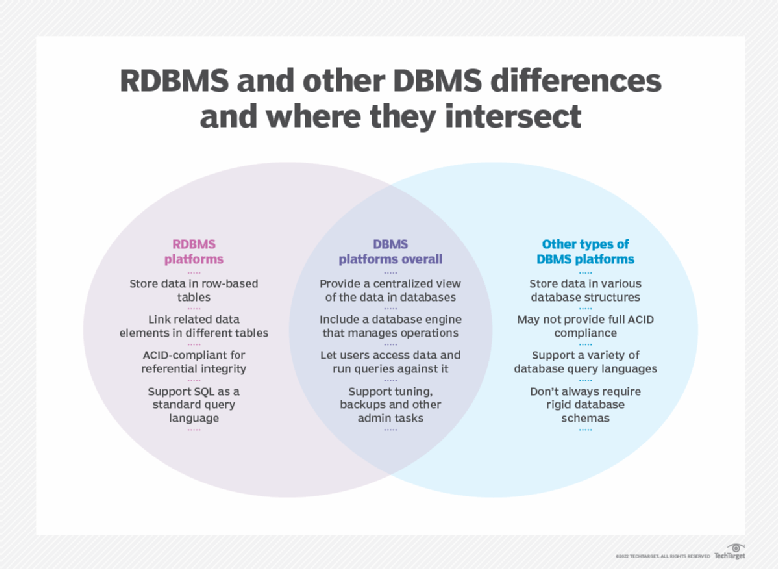

OK, we haven't gotten far, but it's a start and we just need to dig a little deeper. First, the abbreviation decomposition: So, a DBMS is something and an RDBMS is a specific type of something. You also agree that your personal information may be transferred and processed in the United States, and that you have read and agree to the Terms of Use and the Privacy Policy.

You can withdraw your consent at any time. By submitting your email address, you agree to receive emails regarding relevant topic offers from Tech. Both sets of requirements are equally important.What is the difference between DBMS and RDBMS? What's the difference between a database management system (DBMS) and relational database management system (R. Then, one has to account for the additional requirements which result from the new product characteristics inherent to hypermedia. The fact that it is a software environment where hypermedia design takes place implies that one has to analyze first how to support authoring and production activities in general in such an environment. The goal is that this methodology is based on a foundation for hypermedia design.

should be based on a thorough understanding of the new and critical aspects of this new medium for communicating knowledge. What is needed is an orientation or even better a methodology for hypermedia designers which. It is obvious that how designing is done has a strong impact on what is finally produced, distributed, and used. While there is a long tradition in the design of traditional paper-based documents, there is little or no tradition in designing hypermedia documents or more general hypermedia applications. As a result, the process of learning skills is visualized and some basic characteristics of the process are obtained. Next, how the strategy of the assembly task evolves through experiences is also analyzed through the task sequence tree model. The effectiveness of the model in this aspect is confirmed through applying it to some experimental performances of an assembly task. In this paper, it is first argued that the task sequence tree model is also useful for analyzing how an assembly task is currently performed and supporting to find how it should be modified. However, the designed strategy may not be the optimal, especially for a complex assembly task, and hence further improvement will be crucial in practice. and the obtained strategy has been confirmed to be a good starting point through laboratory experiments. How to design an appropriate task sequence tree for a given assembly task has been developed.

The way of performing an assembly task under uncertainties is expressed by a strategy having branches, and the strategy can be expressed by a tree called the task sequence tree. This research aims at providing a method of designing and improving a manual assembly task to be performed under uncertainties.


 0 kommentar(er)
0 kommentar(er)
